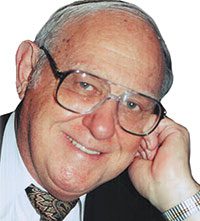Create Tax-Free Wealth
Learn about a new and unique concept called the comprehensive tax plan, and beat up the IRS, legally.
The comprehensive tax plan creates great tax results, while generating a huge amount of cash for your kids and grandchildren. The easiest way to quickly grasp the genius of the CTP is by an example.
Facts for the example:
Joe owns Success Co., CDs, a stock and bond portfolio and real estate (including two homes).
Joe (age 70) and his wife, Mary (66) had an original quote to buy second-to-die life insurance for an annual premium of $14,452 per $1 million of death benefit, if both were healthy. Unfortunately, some medical issues increased the premium to $24,617 per $1 million. They decide to buy a policy with a $5.5 million death benefit with an annual premium of $135,394 (5.5 x $24,617).
For ease of understanding the rather simple CPT process, the overall plan is explained below in four steps.
Step #1. Create a family limited partnership (FLIP).
Joe and Mary contribute $5 million of real estate to the FLIP, receiving back a 1 percent interest as general partners and a 99 percent interest as limited partners. The transaction is tax-free.
But under crazy American tax law, the limited partner’s interest receives a 35 percent discount or $1.75 million (35 percent times $5 million). So, for tax purposes, the real estate is worth only $3.25 million.
Step #2. Transactions with the intentionally defective trust (IDT).
Joe and Mary create an IDT, which is intentionally defective (means will be ignored) for income tax purposes. Then they sell their limited partnership interest to the IDT, receiving a $3.25 million note in payment. The terms of the note are interest only at 5 percent (or $162,500 per year) for 15 years, when the note is due. Of course, this transaction is tax-free. No income tax. No capital gains tax.
Note: The key to the transaction is the 35 percent discount on the FLIP interest allowed by the tax law. The amount of the note is not based on the real intrinsic value of the real estate ($5 million), but its fictitious — for tax-purposes only — value ($3.25 million). The discount causes a cash flow surplus in the IDT.
The IDT cash flow easily covers the required interest and principal payments of the note. When both Joe and Mary have gone to heaven, the IDT will receive the $5.5 million policy proceeds (See Step #3). Tax-free. No income, gift or estate tax.
Wait! There is one more big tax benefit for Joe and Mary: The annual interest ($162,500) they receive is also tax-free under the IDT rules. But sorry, the IDT cannot deduct the interest paid.
Step #3. The IDT buys the $5.5 million second-to-die life insurance policy on Joe and Mary.
The trust is the owner and beneficiary of the policy. What if Joe or Mary (or both) are still alive in 15 years when the note becomes due? There are a few options: The note could be paid partially or in full (using other assets they own). Or the note would simply be paid with a new (interest only or could include principal payments) note, due down-the-road.
Step #4. Create a family bank.
Joe and Mary can tailor the terms of the IDT to accomplish their precise financial goals and dreams for their kids, grandkids and even future generations. The $5.5 million policy death benefit will come to the IDT tax-free.
Some of the funds can be distributed immediately, some when the kids/grandkids reach specific ages. Yes, some funds can be set aside to become a “bank” to fund the needs of future generations: down payment on a first home, start a business, pay emergency medical bills and on and on.
The IDT is drawn to create what’s known as a dynasty trust, which does tax magic.
How? Well, when the last of Joe and Mary go to heaven, the estate tax monster gets its pound of flesh. But what happens with a dynasty trust when down-the-road the kids (and eventually the grandkids) die? Magic. No — not one penny — estate tax. Unfortunately, most estate planners fail to create dynasty trusts.
The trust sets aside enough funds to buy new life insurance policies, on the older beneficiaries of the IDT. When those insured beneficiaries go to the big business in the sky, a new (remember, all estate-tax free) cash benefit will enrich the trust bank for future generations (to be repeated forever).
If you or someone in your family is fortunate enough to own the same type of assets as Joe and Mary — almost any kind of income producing investment or ownership in a family business — then you owe it to yourself and your family to check out how a “Comprehensive Tax Plan,” would work for you.
One warning: When you decide to do your CTP plan, work with an experienced professional.
Want to learn how a CTP can work for you and your family? Please send me via fax to 847-674-5299, or email to irv@irvblackman.com with the following info: (1) Your name, address and all phone numbers (business/cell/home); (2) a personal financial statement (include your spouse, if married); and (3) your birthday (if married, also your spouse). Mark “CTP” at the top of the page.
If you have a question, call me, (Irv) at 847-674-5295.





